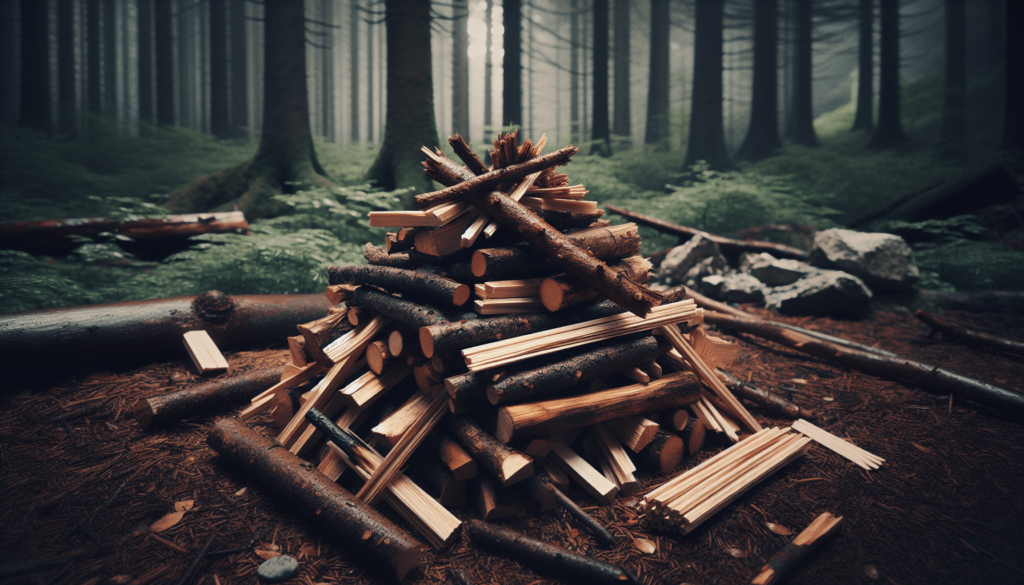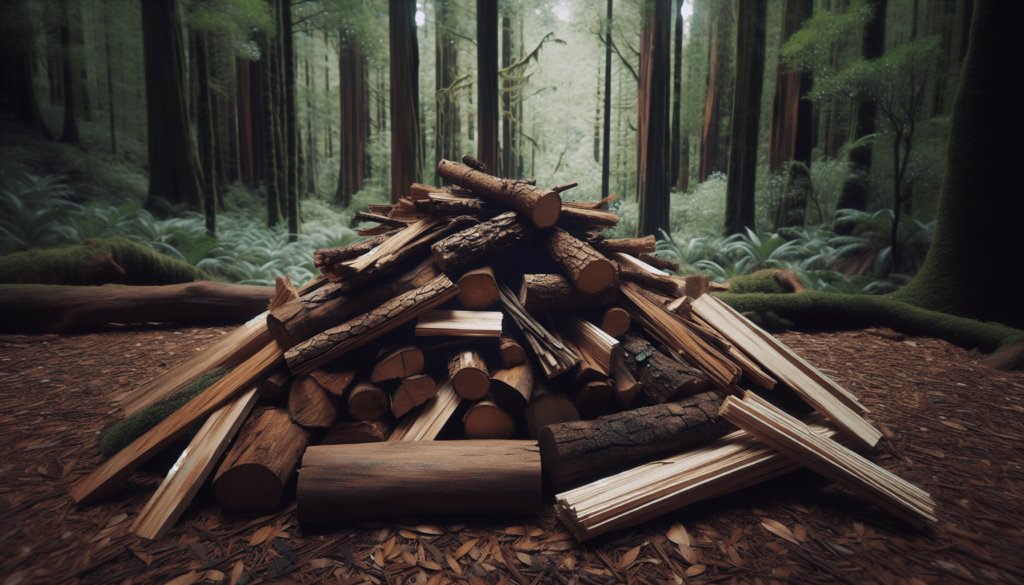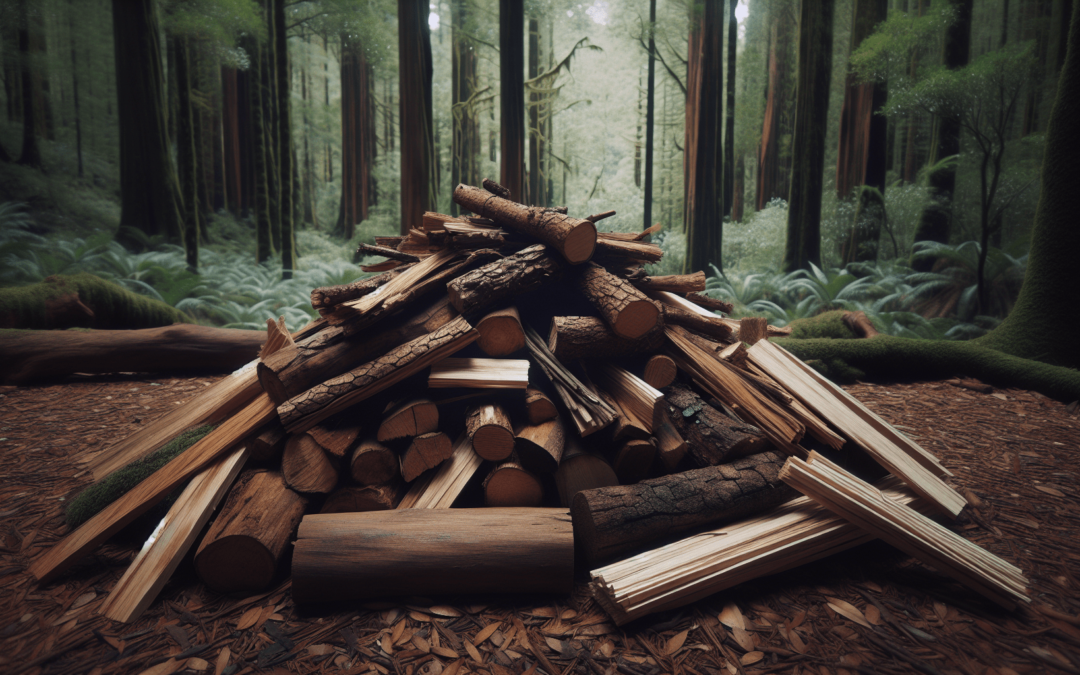Imagine you’re lost in the wilderness, feeling a mix of anxiety and determination. In such critical moments, knowing how to create a signal fire can be a lifesaver. “Creating A Signal Fire For Rescue Situations” is your practical guide to mastering this essential survival skill. You’ll learn everything from selecting the best location to gathering the right materials and maintaining the fire for maximum visibility. With clear, step-by-step instructions, you’ll be better equipped to attract rescuers’ attention and expedite your safe return. Have you ever found yourself in the middle of nowhere, wondering how you would signal for help if you were in trouble? Creating a signal fire could be your lifeline in a rescue situation. It’s a critical skill that anyone venturing into the wilderness should know. Let’s dive into the techniques and considerations for creating an effective signal fire.
What is a Signal Fire?
A signal fire is a deliberately lit fire used to attract attention, especially in emergency situations. It’s an effective and time-tested method for signaling rescuers, hikers, or even passing aircraft. The idea is to create a fire that’s visible from a great distance, thereby increasing your chances of being found.
The Importance of Signal Fires
In rescue situations, time is often of the essence. Signal fires increase your visibility to rescuers who may be searching for you. They can also serve as a morale booster, providing warmth and a sense of proactive steps being taken towards your rescue.
Why Choose Fire for Signaling?
Fire is not only a source of heat and light but also a dynamic signal that can be visible for miles. Its effectiveness is multiplied if you can produce smoke, which stands out against natural backdrops like forests and mountains.
When to Use a Signal Fire?
The best time to use a signal fire is during daylight hours when the smoke can be prominently seen. However, at night, the fire itself can be a beacon. If you have prepared in advance and are in ideal conditions, consider using both day and night signaling.

Basic Elements of a Signal Fire
Every effective signal fire hinges on three basic elements: fuel, location, and visibility. Let’s break these down for better understanding.
| Element | Description |
|---|---|
| Fuel | The materials you use to start and maintain the fire. |
| Location | The strategic positioning of your fire for optimal visibility. |
| Visibility | The clarity and conspicuousness of your fire, ensured by smoke and flames. |
Choosing the Right Fuel
The choice of fuel can make or break your signal fire’s effectiveness. Dry wood, leaves, and branches are excellent choices because they are easy to ignite and maintain. However, you also need to add green leaves or damp materials to create smoke, a crucial part of the signaling process.
- Kindling: Small twigs, dry grass, and shredded bark.
- Intermediate Fuel: Larger sticks and branches.
- Main Fuel: Larger logs that maintain the fire.
Strategic Location
Location is crucial in ensuring that your signal fire is visible to rescuers. Opt for an open area free of overhanging branches, where the smoke can rise unobstructedly.
- Elevated Areas: Hilltops or ridges offer the best visibility.
- Clearings: Large open spaces free from tree cover.
- High Traffic Areas: Near known trails or waterways frequented by people.
Ensuring Visibility
Your fire needs to be as noticeable as possible. Black smoke is more visible during the day, while the fire itself serves as a beacon at night. Use damp leaves or green vegetation to produce thick, black smoke.
Step-by-Step Guide to Building a Signal Fire
Now that you understand the basic elements, let’s go through the steps for creating a signal fire.
Step 1: Gather Materials
Depending on the availability, gather your kindling, intermediate fuel, and main fuel. Look for both dry and green materials as discussed earlier.
Checklist:
- Dry twigs and grass
- Small sticks and intermediate branches
- Large logs
- Green leaves or damp materials
Step 2: Choose and Prepare the Location
Once you’ve identified the best location, clear the area of debris and flammable material. Create a safety perimeter around your fire site to prevent unintended spread.
Step 3: Construct the Fire
- Foundation: Lay down a base of dry twigs and small sticks.
- Kindling Layer: Add kindling in a conical shape, ensuring there is enough space for airflow.
- Intermediate Layer: Place intermediate branches around the kindling.
- Main Fuel: Position larger logs around the structure.
Step 4: Ignite the Fire
Using a lighter, matches, or a fire starter, ignite the kindling at the base. Blow gently to encourage burning without suffocating your fire.
Step 5: Add Smoke
Once your fire is well-established, add green leaves or damp materials to produce thick, black smoke. This will make your signal fire more noticeable during daylight hours.

Safety Considerations
While a signal fire can save your life, it’s equally important to be aware of its potential dangers. Uncontrolled fires can cause wildfires, which are hazardous to both you and the environment.
Preventing Wildfires
- Clear a Safety Perimeter: Ensure there are no flammable materials within a 10-foot radius.
- Have Water and Soil Ready: Be prepared to extinguish the fire quickly if needed.
- Monitor Constantly: Never leave your fire unattended.
Emergency Response
In case of an accidental wildfire, don’t hesitate to evacuate the area and seek safer ground. Contact emergency services as soon as possible.
Enhancing Your Signal
Now that you know how to build a signal fire, let’s discuss ways to enhance it for even better visibility and effectiveness.
Multiple Fires
Creating multiple fires in a triangular pattern is a universal distress signal. This approach increases the likelihood of your signal being noticed.
| Formation Type | Description |
|---|---|
| Single Fire | Basic and easier to maintain. |
| Triangular | Universal distress signal. |
| Linear | Can be used to guide rescuers towards you. |
Adding Reflective Materials
Adding reflective materials like aluminum foil or mirrors around your fire can enhance visibility. These materials can catch and reflect light, making your position more noticeable.
Using Color
Brightly colored items like clothing or tarps can be positioned near your fire to make the signal more visible.
Assessing and Optimizing Your Signal Fire
Once your fire is going, you need to constantly assess and optimize it. Is the smoke rising straight up into the air? Are the flames visible from a distance? Here are some tips to keep everything in check:
Smoke Assessment
Make sure your smoke is dark and thick. If not, add more green leaves or damp materials. Too much dry material will only produce white smoke, which is less visible.
Flame Visibility
At night, flames are your primary signaling method. Ensure the fire is well-fueled to maintain a strong light source.
Regular Maintenance
A signal fire requires constant maintenance. Regularly add fuel and smoke-producing materials to keep it going strong. Check your surrounding area to ensure the fire hasn’t spread and that it’s still safe.
Additional Signaling Methods
Despite the effectiveness of a signal fire, it’s wise to know alternative methods for attracting attention. These can be used in conjunction with your signal fire to increase your chances of rescue.
Signal Mirrors
Signal mirrors can reflect sunlight to create a flash that can be seen for miles. Direct the reflection towards any potential rescuers.
Whistles and Shouts
A whistle can be heard farther than a human voice and is less likely to strain you. Shout if you hear or see someone nearby.
Ground-to-Air Signals
Creating large symbols on the ground can attract the attention of passing aircraft. Use logs, stones, or even clothing to form symbols like “SOS” or large arrows pointing towards your location.
Flashlights
At night, a flashlight can serve as an additional signaling tool. Use it to flash SOS (three short flashes, three long flashes, three short flashes) in Morse code.
Equipment and Tools for Creating Signal Fires
Having the right tools and equipment can make creating a signal fire easier and more effective. Here are some essential items you should consider packing for any wilderness adventure:
Fire Starters
Reliable fire starters like waterproof matches, lighters, and magnesium fire starters are essential. These tools will help you ignite your fire quicker and more efficiently.
Multi-Tool
A multi-tool can be invaluable for gathering and preparing materials. It typically includes a knife, saw, and other useful implements.
Emergency Blankets
These are not just for warmth; they can be used to catch rainwater or reflect light from your fire, enhancing its visibility.
Signal Mirror
A small, compact mirror designed for signaling. It comes in handy for enhancing your signal’s visibility.
Bright Clothing or Tarps
These can be used to amplify your signal fire’s visibility. The brighter and larger the item, the better.
Practical Scenarios
To help you understand better, let’s discuss a few practical scenarios and how to set up your signal fire effectively.
Scenario 1: Stranded on a Mountain
You’re stranded on a mountain with wide-open visibility. The best approach would be to set up multiple small signal fires in a triangular pattern on an elevated ridge. Use green vegetation to generate thick smoke, and keep the fires maintained regularly.
Scenario 2: Lost in a Dense Forest
In dense forests, visibility is limited due to tree cover. Find a clearing or create one by clearing an area yourself. Build a single, high-visibility fire and use reflective materials to boost its visibility. Position brightly colored items nearby to attract attention.
Scenario 3: Stuck in a Canyon
Being stuck in a canyon limits visibility both horizontally and vertically. Focus on creating a fire with the thickest smoke possible and position it on a raised platform or boulder if available. A ground-to-air signal like “SOS” formed with rocks or logs can also help.
Final Thoughts
Creating a signal fire can be your best bet for attracting rescue and ensuring your safety in an emergency situation. By understanding the elements of fuel, location, and visibility, and combining these with essential tools and additional signaling methods, you can significantly increase your chances of being rescued.
Remember, the key to an effective signal fire is constant assessment and optimization. Always be prepared with the right tools and knowledge before venturing into the wilderness. With practice and preparation, your ability to create a signal fire could one day save your life.
Stay safe out there, and happy adventuring!

